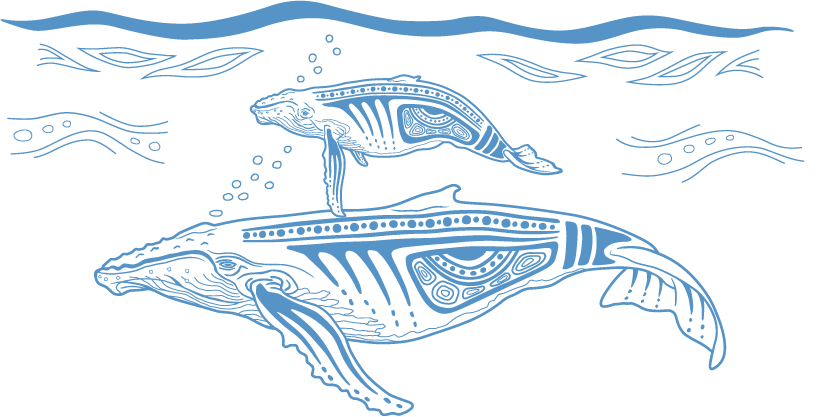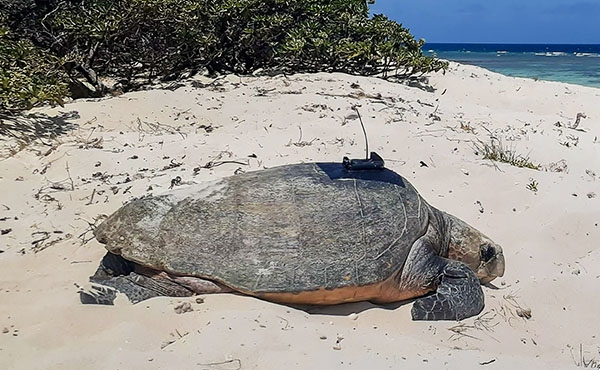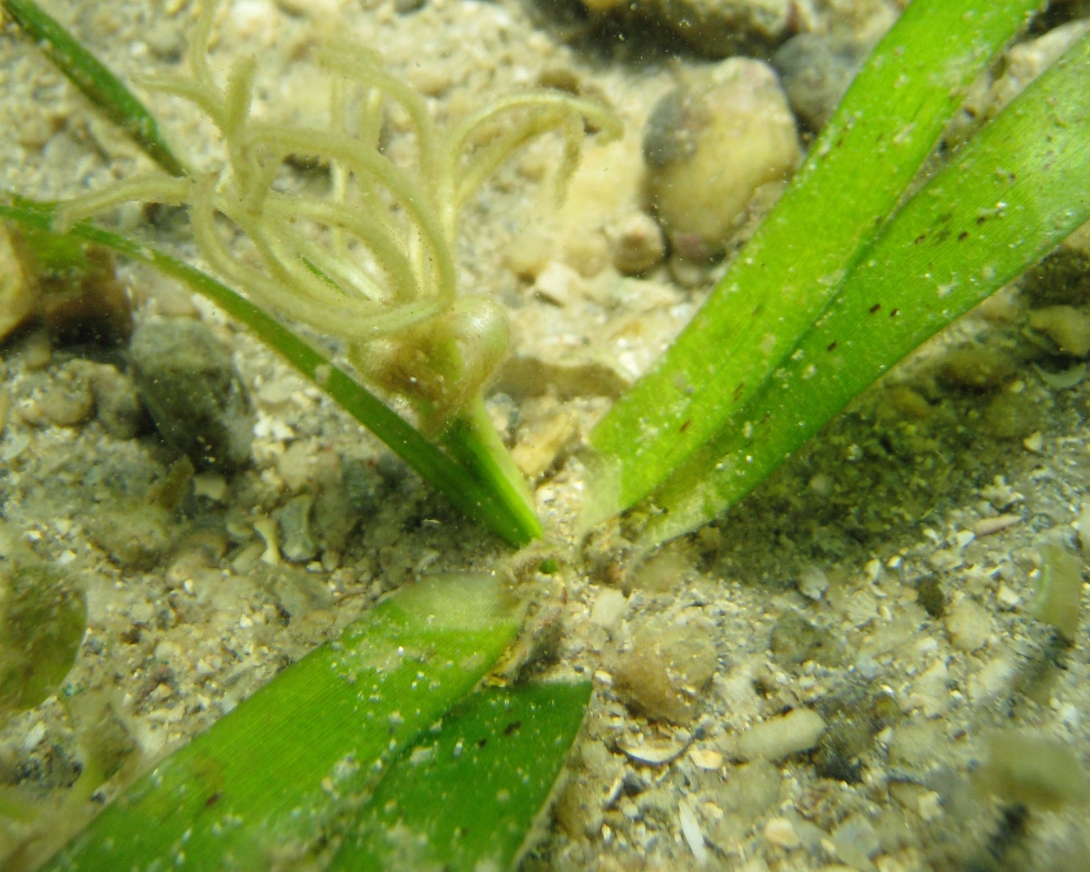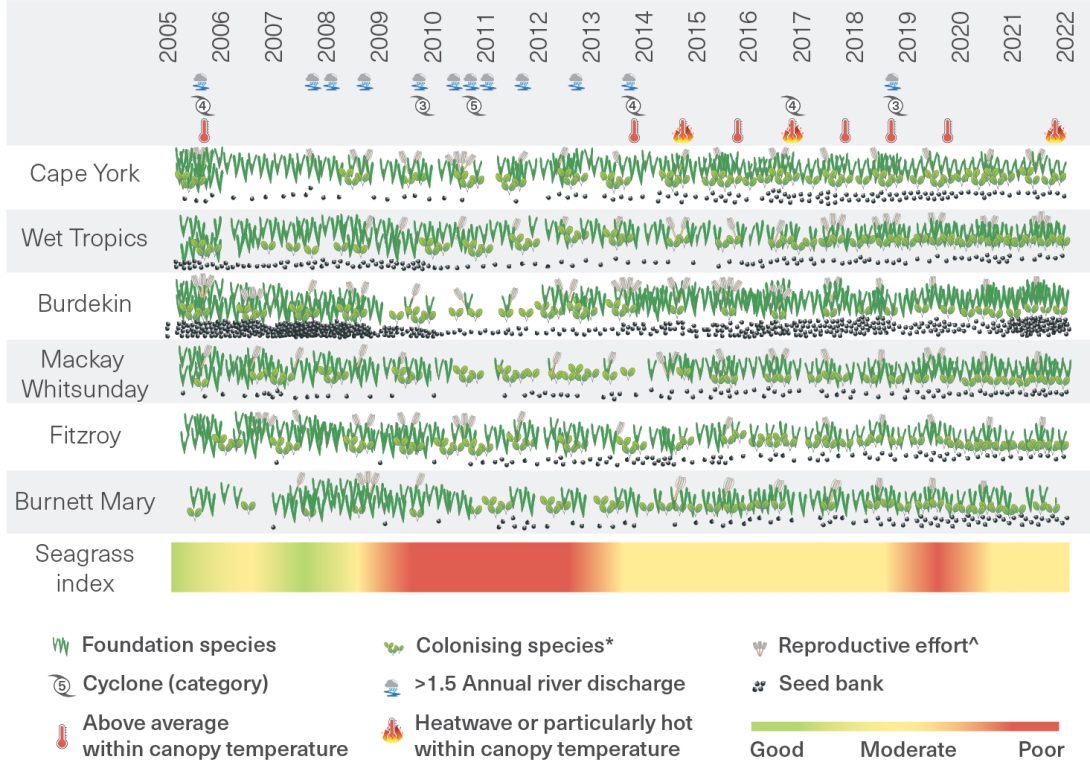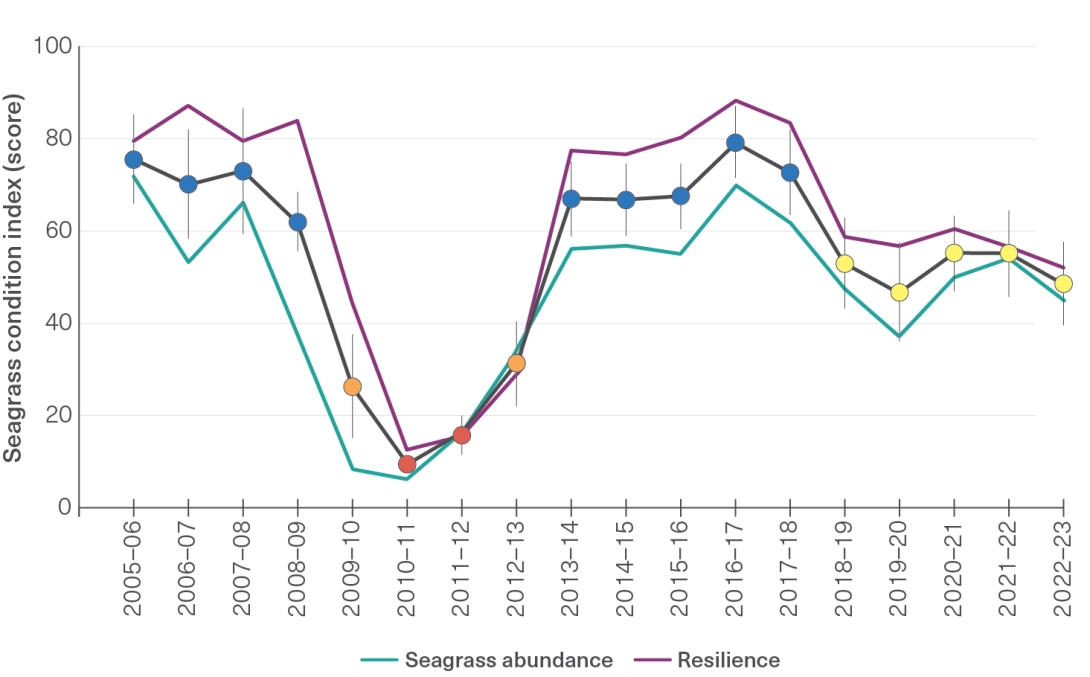145.
McKenzie, L.J., Collier, C.J., Langlois, L.A. and Yoshida, R.L. 2023, Marine Monitoring Program: annual report for inshore seagrass monitoring 2021–22. Report for the Great Barrier Reef Marine Park Authority, Great Barrier Reef Marine Park Authority, Townsville.
149.
McKenzie, L.J., Collier, C.J., Langlois, L.A., Yoshida, R.L. 2024, Marine Monitoring Program: Annual report for inshore seagrass monitoring 2022–23. Report for the Great Barrier Reef Marine Park Authority, Great Barrier Reef Marine Park Authority, Townsville.
150.
Collier, C.J., Langlois, L., Waycott, M., McKenzie, L.J. 2021, Resilience in practice: development of a seagrass resilience metric for the Great Barrier Reef Marine Monitoring Program, Great Barrier Reef Marine Park Authority, Townsville.
363.
Moran, D., Robson, B., Gruber, R., Waterhouse, J., Logan, M., et al. 2023, Marine Monitoring Program Annual Report 2021-22 Water Quality, Great Barrier Reef Marine Park Authority, Townsville.
516.
Scott, A.L., York, P.H., Macreadie, P.I. and Rasheed, M.A. 2021, Spatial and temporal variability of green turtle and dugong herbivory in seagrass meadows of the southern Great Barrier Reef (GBR), Marine Ecology Progress Series 667: 225-231.
690.
Collier, C.J., Waycott, M. and McKenzie, L.J. 2012, Light thresholds derived from seagrass loss in the coastal zone of the northern Great Barrier Reef, Australia, Ecological Indicators 23: 211-219.
1883.
Department of Environment and Science 2018, Reef 2050 Water Quality Improvement Plan 2017-2022, Queensland Government, Brisbane.
1903.
Marsh, H., Grech, A., McMahon, K. 2018, Dugongs: seagrass community specialists, in Seagrasses of Australia: Structure, Ecology and Conservation, eds A.W.D. Larkum, G.A. Kendrick and P.J. Ralph, Springer International Publishing, Cham, pp. 629-661.
2057.
McKenzie, L.J., Langlois, L.A. and Roelfsema, C.M. 2022, Improving approaches to mapping seagrass within the Great Barrier Reef: from field to spaceborne Earth observation, Remote Sensing 14(260): 1-28.
2058.
Waycott, M., Longstaff, B.J. and Mellors, J. 2005, Seagrass population dynamics and water quality in the Great Barrier Reef region: A review and future research directions, Marine Pollution Bulletin 51(1-4): 343-350.
2059.
Unsworth, R.K.F., Collier, C.J., Waycott, M., Mckenzie, L.J. and Cullen-Unsworth, L.C. 2015, A framework for the resilience of seagrass ecosystems, Marine Pollution Bulletin 100(1): 34-46.
2060.
Grech, A., Hanert, E., McKenzie, L., Rasheed, M., Thomas, C., et al. 2018, Predicting the cumulative effect of multiple disturbances on seagrass connectivity, Global Change Biology 24(7): 3093-3104.
2061.
Kilminster, K., McMahon, K., Waycott, M., Kendrick, G.A., Scanes, P., et al. 2015, Unravelling complexity in seagrass systems for management: Australia as a microcosm, Science of the Total Environment 534: 97-109.
2062.
Great Barrier Reef Marine Park Authority 2012, A vulnerability assessment for the Great Barrier Reef: Seagrass, Great Barrier Reef Marine Park Authority, Townsville.
2063.
Udy, J., Waycott, M., Carter, A., Collier, C., Kilminster, K., et al. Monitoring seagrass within the Reef 2050 Integrated Monitoring and Reporting Program: final report of the seagrass expert group 8 June 2018, Great Barrier Reef Marine Park Authority, Townsville.
2064.
McKenzie, L., Mellors, J., Waycott, M. 2008, Great Barrier Reef Water Quality Protection Plan - Marine Monitoring Program Intertidal Seagrass, Reef and Rainforest Research Centre, Cairns.
2065.
McKenzie, L.J., Collier, C.J., Langlois, L.A., Yoshida, R.L., Uusitalo, J., et al. 2019, Marine Monitoring Program: Annual Report for inshore seagrass monitoring 2017-2018. Report for the Great Barrier Reef Marine Park Authority, Great Barrier Reef Marine Park Authority, Townsville.
2066.
McKenzie, L.J., Collier, C. and Waycott, M. 2014, Reef Rescue Marine Monitoring Program - Inshore Seagrass, Annual Report for the sampling period 1st July 2011 – 31st May 2012, James Cook University, Cairns.
2067.
Schaffelke, B., Thompson, A., Carleton, J., Davidson, J., Doyle, J., Furnas, M., Gunn, K., Skuza, M., Wright, M., Zagorskis, I. 2009, Reef Rescue Marine Monitoring Program. final report of AIMS activities 2008/09, Australian Institute of Marine Science, Townsville.
2068.
McKenzie, L.J., Collier, C.J, Langlois, L.A., Yoshida, R.L., Uusitalo, J., Waycott, M 2021, Marine Monitoring Program: Annual Report for Inshore Seagrass Monitoring 2018–19, Great Barrier Reef Marine Park Authority, Townsville.
2069.
McKenzie, L.J., Collier, C.J., Langlois, L.A., Yoshida, R.L., Smith, N., Takahashi, M., Waycott, M., James Cook University 2015, Marine Monitoring Program: inshore seagrass, annual report for the sampling period 1st June 2013 - 31st May 2014, James Cook University, Townsville.
2070.
McKenzie, L.J., Collier, C.J., Langlois, L.A., Yoshida, R.L. and Waycott, M. 2022, Marine Monitoring Program: Annual report for inshore seagrass monitoring 2020–21. Report for the Great Barrier Reef Marine Park Authority, Great Barrier Reef Marine Park Authority.

